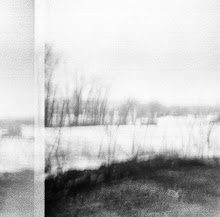
An old crotchety man. A young enthusiastic women. These two polar opposites are the main characters of Wallace Stegner’s “All the Little Live Things”. The extreme contrasts in the personalities of Joe Allston and Mariam Caitlin result in both discord and amity. These conflicts are seen clearly in the many character differences between the two, as well as their quarrelling interactions. On a deeper level, Stegner creates two characters that ingenuously represent two differing environmental views.
Joe Allston, a retired literary agent, moved to the countryside where he grows a well-kept garden. Weeded, dead-headed, pruned, and edged you might mistake his gardens to belong to the retired head of landscaping for the Sydney Royal Botanical Gardens. Perfect flower-beds do not come easy as Joe describes his never-ending battle,
Here in authentic Eden, where plants grow the way fire goes up a fuse, you can’t turn your back for two days without having the place taken over by things that wither or curl or frazzle the leaf, things that feed on the hearts of roses, things like mildews and thrips and red spiders and white flies and mealy bugs and borers, the blights and the rusts and the smuts. . . I was self-employed in a holy war against the thousands of pests that infest Eden. (54-55)
He fights to keep everything in his garden perfect. From an equal blend of perfectly balanced colors to a variety of leaf sizes and shapes. Towards the beginning of the book, gophers start burrowing around his garden. Joe gets his gun to end their peskiness. But in his eye, they are more than nuisances, they are his enemies. I started to realize just how personally he took their existence when he says, “Who the hell are these? Trespassers, shakers of the earth” (56). In this scene Joe is, as always, trying to shape and control the natural world to be aesthetically pleasing to him. It is his never-ending fight to tame and overcome nature. For to him, the sole purpose of nature is to serve mankind, and if it cannot be domesticated, it should not exist.
It is in this scene that Mariam is first introduced. As Joe looks down at a gopher he has just shot, he is startled by the “musical voice that says, ‘For heaven’s sake, what have you gone and done’” (57). This is the first of many times that Mariam will speak out against Joe’s methods of controlling the natural world. She questions his gardening style early on by asking, “Is it fair to plant a lot of plants that were never intended to grow here and then blame the gophers for liking them?” (59).
Mariam represents the naturally balanced earth. She is often described by Stegner with earthly language such as “young poplar leaves” (57). Mariam would like to let the earth go, let the foreign plants die and allow the indigenous plants to grow back. She is forever optimistic, not seeing the “bad” plants such as poison-ivy as bad but simply as other living plants. Even the thorns on the roses and the crab-grass are beautiful to her. Mariam is an untamable spirit her wild-soul expressed in her passion for nature. Although her simple outlook on life and the world around her can be depicted as ignorant, she really seems more naïve; she is untouched by the synthetic troubles so often blown out of proportion by the world. To me, she is the very image of our long lost, carefree youth.
Despite their conflicting personalities and quarrelsome interactions, not all of the tension between them is negative. Joe and Mariam mold and mesh in a conflicting way that is similar to that of elementary students who claim to loath one another but for some reason, fight after fight, remain best friends. Joe never quite understands Mariam, but her friendship is of great importance. In the garden one day, disgusted at finding aphids on his roses, Joe mockingly threatens to send Mariam the “ruined” rose, accusing her, “You like your roses with holes in them” (85). Once again Joes shows that he does not quite understand her. It is not that Mariam likes roses with holes in them; she simply sees each rose as equally beautiful to the next whether it is full of holes and being eaten by aphids or picture perfect on the set of a photo shoot. She sees beauty in all things.
Mariam’s inevitable death, although rivetingly horrifying, helps Joe to fight his own demons surrounding the loss of his son. Her death allows for some kind of closure in his life and guides him to move on. Not only does it help him to overcome a past traumatic death but also changes his very way of thinking. Stegner ends the novel with Joe reflecting on Mariam,
Not for a moment. And so even in the gnashing of my teeth I acknowledge my conversion. It turns out to be for me as I once told her it would be for her daughter. I shall be richer all my life for this sorrow. (345)
With “All the Little Live Things”, Stegner created a series beautifully represented, realistic conflicts. On multiple levels he creates turmoil from petty quarrels, to inner havoc, to the constant deep undertones of unchanging on-going environmental conflict. Because of the deep, intricate relationship between these two characters, it is by far one of my favorite novels.
Stegner, Wallace. All the Little Live Things. New York, N.Y., U.S.A.: Penguin, 1991. Print.

No comments:
Post a Comment